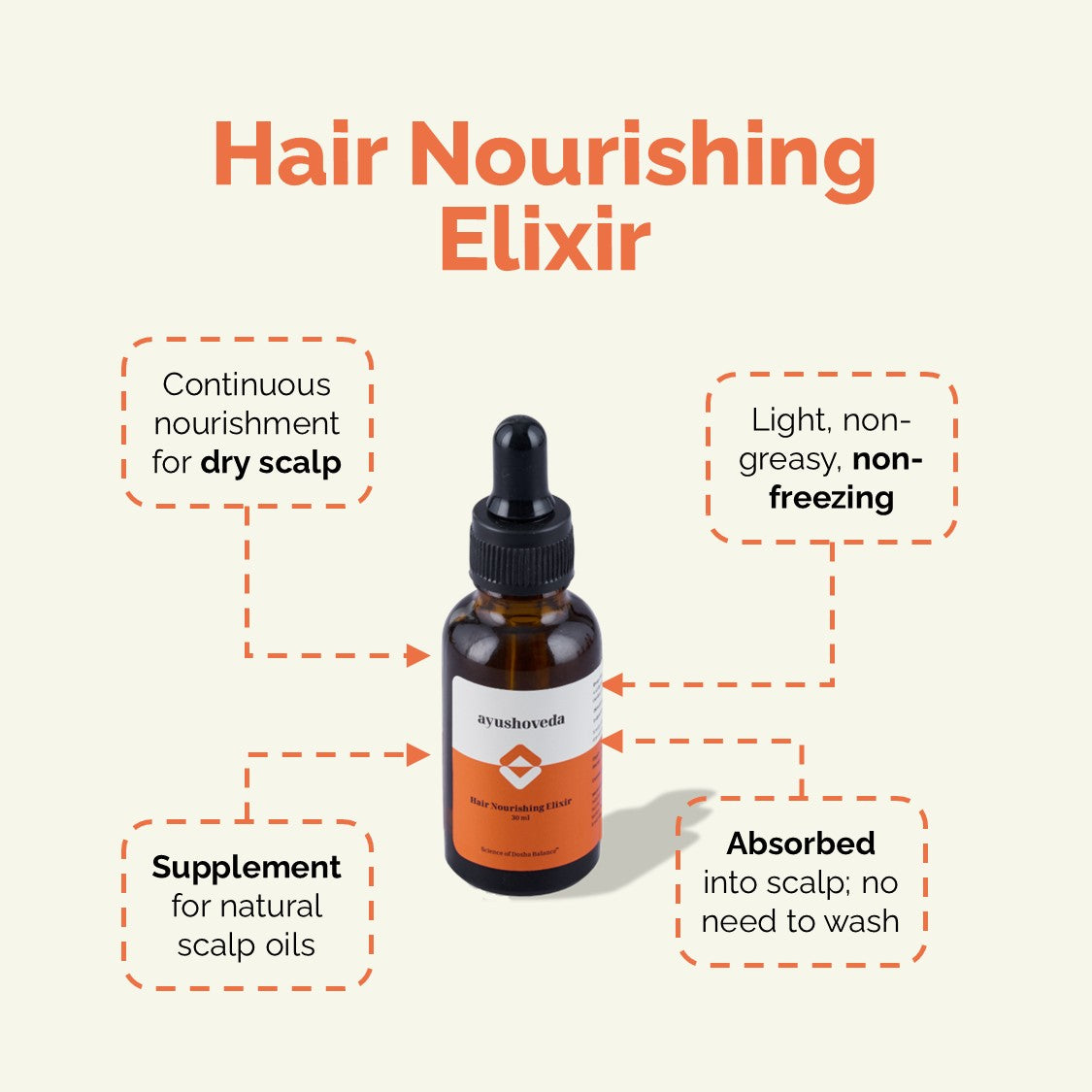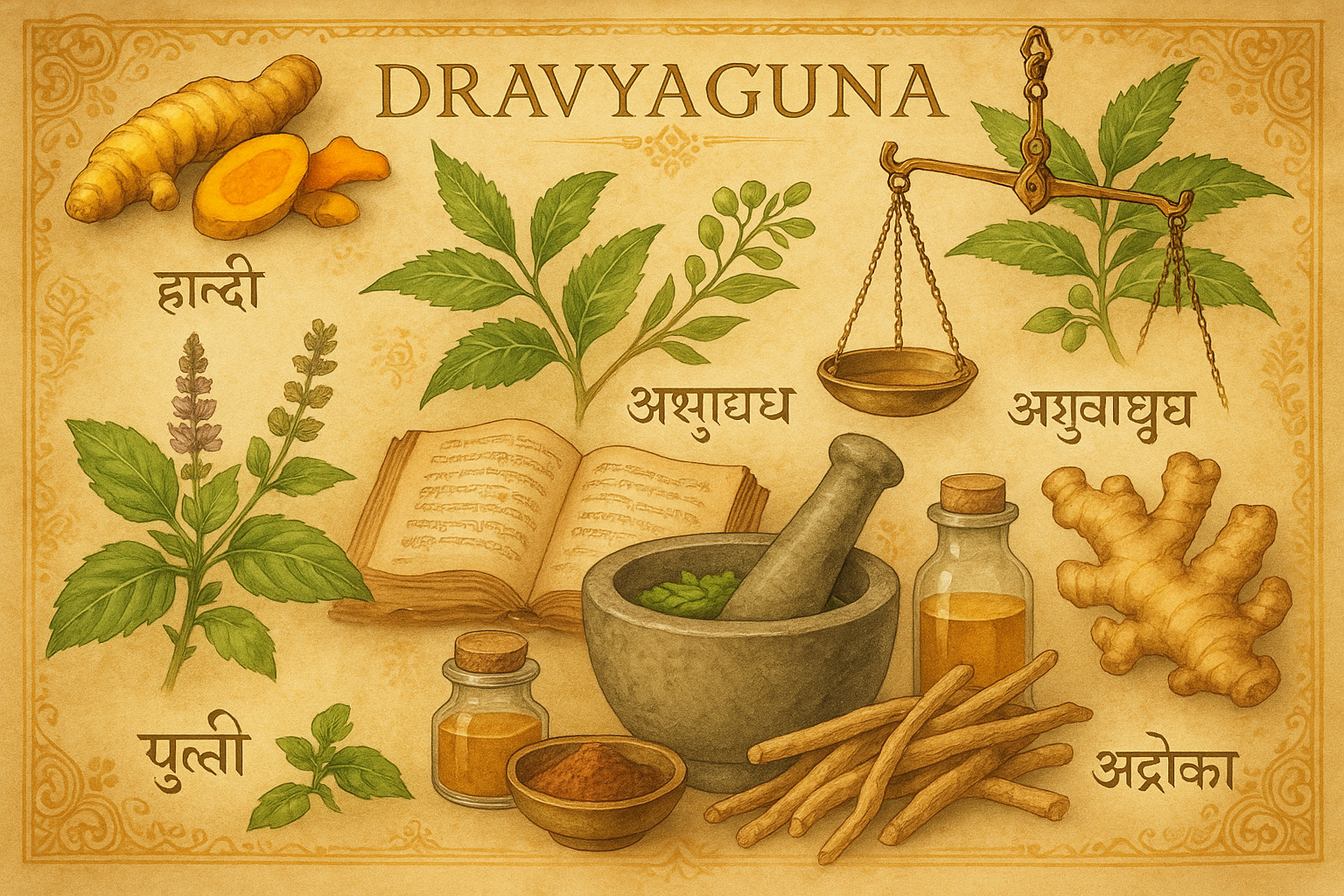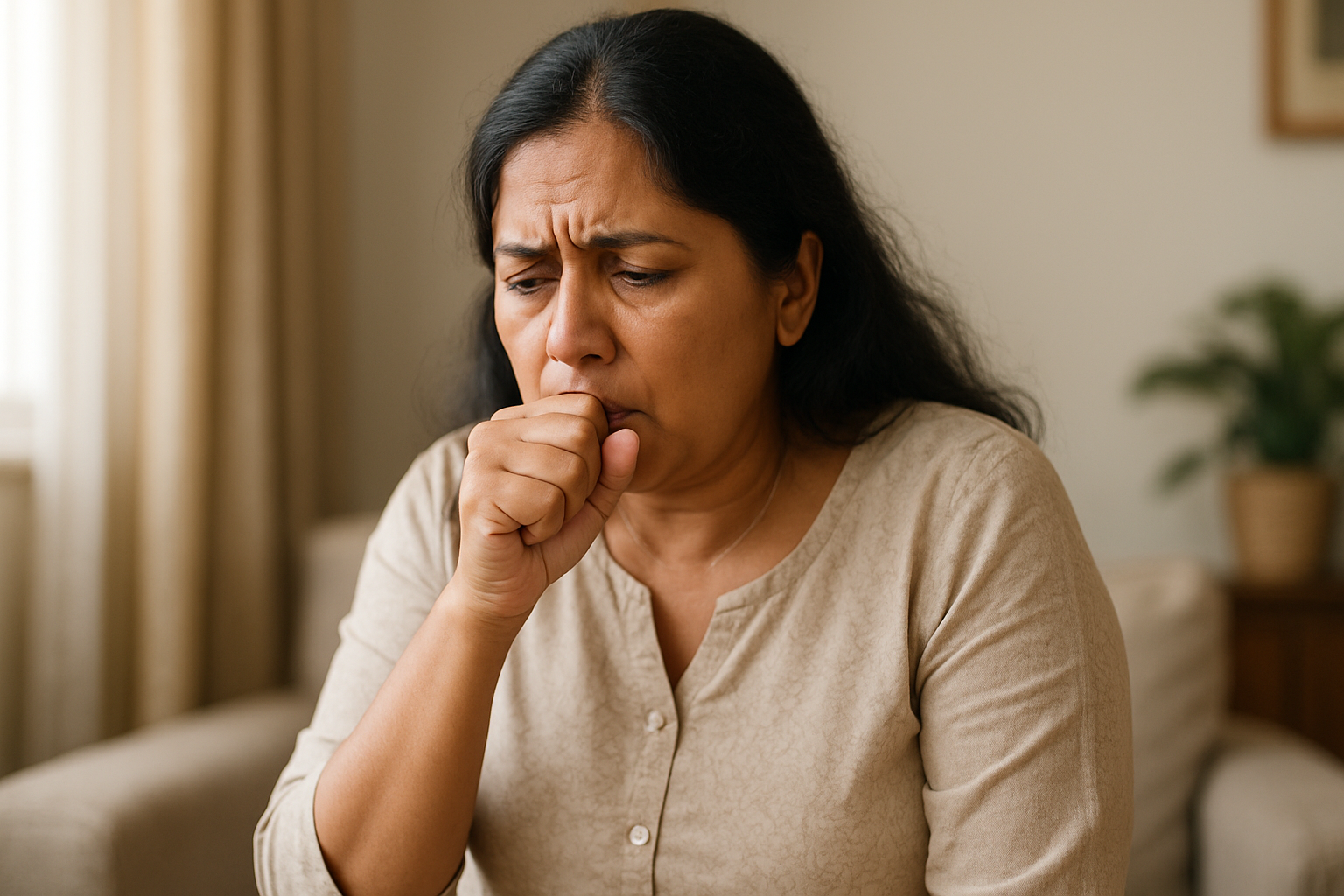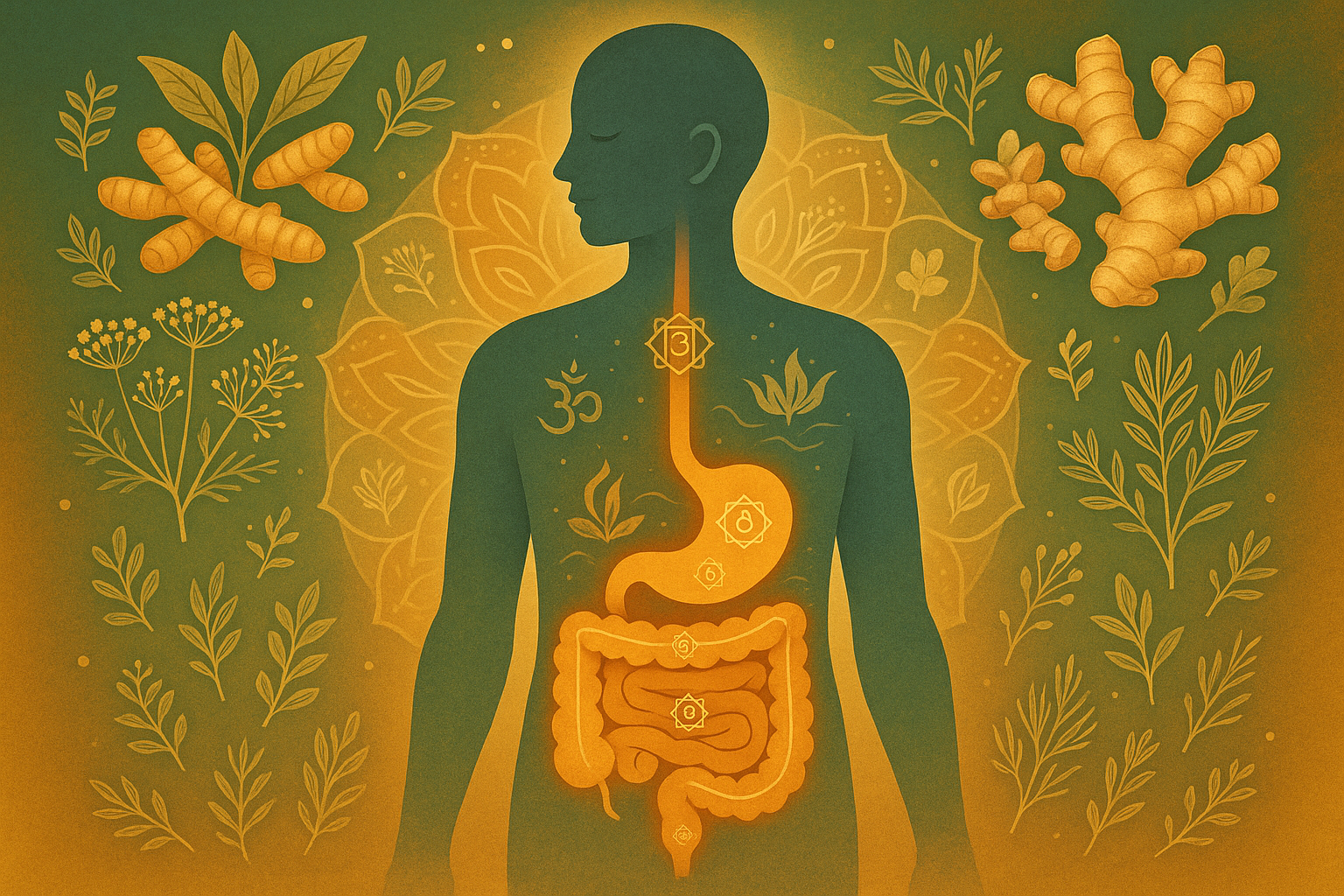Dr. Nambi shares that, according to Ayurveda, everything in nature is medicine—if you understand how to use it.
Dravya Guna is not just the Ayurvedic approach to herbal pharmacology; it's a framework that connects dosha balance, taste, potency, digestion, and action to craft personalized treatments through food, lifestyle, and herbs.
In this Ask Me Anything session, Dr. Nambi explored the foundational Ayurvedic concept of Dravya Guna; the properties and medicinal applications of substances, including herbs, minerals, animal products, and everyday foods.
The Basis of All Matter: Panchamahabhuta
Dr. Nambi emphasized that all beings—plants, animals, humans—and all substances are composed of the five fundamental elements (Panchamahabhutas): Earth, Water, Fire, Air, and Space. These elements also give rise to the Tridoshas—Vata, Pitta, and Kapha—whose balance determines our health.
The Three Pillars of Treatment in Ayurveda
Ayurveda approaches healing through a four-fold strategy:
-
Ahara (Food) – What we eat is the first line of health. The right diet tailored to one’s constitution is key.
-
Vihara (Lifestyle) – Daily routines, exercise, rest, and habits influence doshic balance.
-
Vichara (Thoughts) – Attitude towards life. This includes stress, guilt or anxiety.
-
Aushadha (Medicine) – Only when food, lifestyle and thoughts are insufficient does medicinal treatment come into play.
Understanding Gunas: The 20 Qualities of Substances
Each Dravya (substance) is described in terms of 20 paired qualities, known as the Gurvadi Gunas. These include:
-
Guru (heavy) vs Laghu (light)
-
Snigdha (unctuous) vs Ruksha (dry)
-
Ushna (hot) vs Sheeta (cold)
-
Tikshna (sharp) vs Manda (dull)
The effect of any substance on the body depends on how these qualities interact with the existing doshic imbalances. For instance:
-
Vata is light, dry, cool—so it is balanced by substances that are heavy, oily, and warm.
-
Pitta is hot, sharp, and oily—balanced by cool, dull, and dry substances.
-
Kapha is heavy, cold, and greasy—balanced by light, hot, and dry properties.
The Five-Fold Evaluation: Rasa Panchaka
Before applying any substance medicinally, Ayurveda examines it using the framework of Rasa Panchaka, comprising five parameters:
-
Rasa (Taste) – Sweet, sour, salty, bitter, pungent, and astringent. Taste is the first indication of a substance’s effect.
-
Guna (Quality) – As explained, the 20 fundamental attributes.
-
Virya (Potency) – Whether the substance is heating or cooling in effect.
-
Vipaka (Post-digestive Effect) – How the taste transforms after digestion; this influences long-term impact.
-
Karma (Action) – The specific physiological or doshic effect, such as carmative, digestive, purgative, strengthening, antitoxic etc
Dr. Nambi also mentioned a sixth, often-debated factor: Prabhava, or the inexplicable unique effect of a substance, seen when two herbs with identical properties behave differently due to their innate power.
Rasapradhana vs. Veeryapradhana
In Ayurveda, the classification of food and medicine depends on which aspect is dominant:
-
Rasapradhana Dravya (taste-dominant) are considered foods.
-
Veeryapradhana Dravya (potency-dominant) are seen as medicines.
However, Dr. Nambi noted that the boundary between food and medicine is fluid—anything can be food or medicine depending on how it is used.
The Importance of Compatibility: Viruddha Ahara
One of the key takeaways was the concept of Viruddha Ahara—incompatible food combinations. Dr. Nambi warned against mixing incompatible items such as fruits with milk or different types of fruits in one meal, which can disturb digestion and cause disease. He stressed the importance of understanding the interactions between Gunas to avoid creating harmful combinations.
Q&A Highlights
Q: Is there one food rich in protein, vitamins, and minerals?
-
No single food offers everything. Stick to traditional, balanced meals, eat on time, and maintain a healthy lifestyle.
Q: What food is best during the Karkataka (monsoon) month?
-
Avoid heavy or hard-to-digest foods. Go for warm, light meals like medicated Kanji, cooked vegetables, and moderate intake of ghee or meat.
Q: What should eczema patients eat or avoid?
-
Avoid black gram, jaggery, milk products, and fermented foods. Prefer vegetables like bottle gourd and snake gourd. Stay physically active.
Q: Is there a permanent solution for pigmentation from lichen planus?
-
Yes, with proper detoxification and stress management. The root cause must be addressed.
Q: Which fruits should not be mixed with milk?
-
Avoid mixing any fruit with milk due to sourness or hidden incompatibility. Eat fruits individually on different days.
Q: What causes stress in children and how to manage it?
-
Parental and social pressures are primary causes. Let children follow their interests; don’t impose uniform expectations on all.
Q: Can overnight hair oiling be done?
-
No, apply oil in the morning, leave it for 45 minutes, and then rinse. Overnight application may lead to cold or associated kapha issues.
Q: What is good postpartum food (especially after C-section)?
-
Focus on light, easily digestible, cooked foods. Avoid uncooked items. Rest is crucial to restore balance, particularly to reduce Vata.















